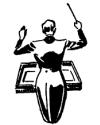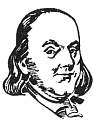|
|
|
2. The Birth of an Idea
A Radio Talk by Charles F. Kettering
 This Sunday afternoon, in every part of the country, people are
listening to this great orchestra. Radio can carry this music to any
place in the world.
This Sunday afternoon, in every part of the country, people are
listening to this great orchestra. Radio can carry this music to any
place in the world.
How long has it taken man to do this? The
records show we have been developing the elements of radio for about a
hundred years. But, if we made a more careful study, we would find the
thing really started in the year 600 B.C. - more than 2,500 years ago.
It really started as a thought
- a very weak, vague idea. In the year
600 B.C., a Greek philosopher, Thales of Miletus, found that by rubbing
amber he produced a force that would pick up straws.
Two thousand two hundred years later,
Sir William Gilbert, Queen
Elizabeth's physician, did a little more
thinking and experimenting with the idea and called the phenomenon
electricity. Sixty years
later, Otto
von Guericke, a German, built a machine
to generate static electricity.
 One hundred years later, Benjamin
Franklin identified positive and
negative electricity and proved lightning and electricity were the same
thing. In 1820, Oersted, a Dane,
proved that electricity would produce
magnetism. And about the same time, Faraday did some experimenting and
discovered the principles of the electric motor.
One hundred years later, Benjamin
Franklin identified positive and
negative electricity and proved lightning and electricity were the same
thing. In 1820, Oersted, a Dane,
proved that electricity would produce
magnetism. And about the same time, Faraday did some experimenting and
discovered the principles of the electric motor.
|
|


 This Sunday afternoon, in every part of the country, people are
listening to this great orchestra. Radio can carry this music to any
place in the world.
This Sunday afternoon, in every part of the country, people are
listening to this great orchestra. Radio can carry this music to any
place in the world. One hundred years later,
One hundred years later, 





